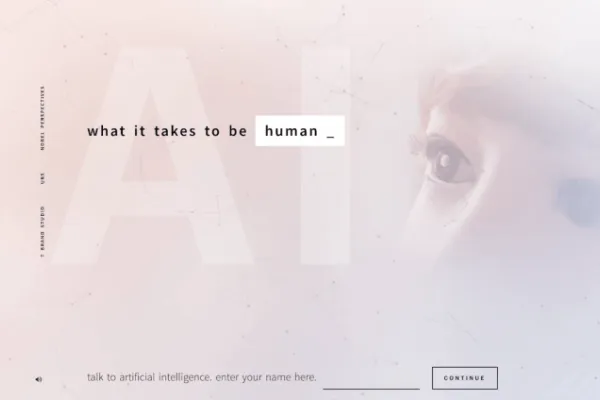
 Details
Details
What if you could eliminate the mundane aspects of marketing work? Imagine spending your time on what truly interests you, all while significantly boosting your marketing results.
Once upon a time in the bustling city of Adville, a group of skilled and relentless marketeers faced a series of challenges, each with their own set of problems and objectives.
Meet Nikoline, a proficient copywriter renowned for her eloquence and wit. Her ongoing challenge was to consistently craft the right words to capture user attention and effectively convey advertising messages.
Next is Svend, a data analyst with a passion for numbers. His hurdles revolved around navigating through vast amounts of data to extract meaningful insights for optimizing ad campaigns.
Then there's Jonas, a strategic planner who relishes analyzing consumer behaviour and market trends. His challenge was keeping up with the ever-changing landscape of trends and consumer preferences.
Together, the team tackled the challenges of the advertising industry and pursued their goals. However, in this dynamic sector, challenges seemed to grow bigger and more complex. That was until they encountered the Wise Sage named AI.
Join me on this brief journey as we delve into some of the captivating possibilities within artificial intelligence (AI) in the realm of native advertising.
Drawing from my 25 years of experience as a seasoned professional in the advertising industry, I've witnessed the explosive growth in scope, complexity, and the demand for real-time data access. Having worked with AI for over 5 years within native advertising, I've come to realize that AI could be the solution many have been waiting for.
I will explore three areas within AI that marketeers can benefit from:
AI – Ad Material Creation and Media Planning
The issue often lies in the fact that the knowledge to create ad materials is frequently built upon a thin and potentially inaccurate foundation of data. Placing campaigns on the right media outlets with the right placements often lacks emphasis due to the lack of knowledge and direction from the buyer's side.
AI-based analytical tools can assist with the following:
- Creating or inspiring the production of ad materials.
- Testing ad materials to determine how each ad performs based on various campaign objectives.
- Predicting the media that yields the most effective results for each ad.
- Identifying the optimal placement on each media outlet for maximum ad impact.
This testing process reveals whether the right ad is on the right media platform with the appropriate format.
Campaign results and the understanding of communication to the target audience significantly improve.
AI analysis tools are user-friendly and available for a modest monthly fee.
AI-based Media Buying
Programmatic advertising has been one of the most significant game changers in the advertising industry.
AI-based media buying accounted for approximately 117 billion dollars in the US last year alone. The development continues at a rapid pace, with Statista predicting that nearly 90% of all digital advertising revenue will come from programmatic advertising by 2026.
In the past, ad buyers would send messages or make calls to activate a campaign.
Activating a campaign used to take hours, and ad budgets were fixed, meaning that if a campaign didn't perform, the allocated funds were lost.
Programmatic advertising is an automated process of buying and selling ad inventory through an ad exchange. This process connects advertisers with media outlets and is enabled by AI technology and machine learning. Machines independently buy and sell ads based on the requirements set by advertisers and media outlets.
Today, ad buyers can activate a campaign across hundreds of media outlets in under 15 minutes.
The prices are lower compared to when ad buyers contact the media outlets directly. Campaigns can be executed with much more segmentation and flexible budget allocation, preventing losses from ineffective media placements.
This saves time and money, leads to better campaign outcomes, and provides deeper insights into campaigns and target audiences.
Getting started with various programmatic providers is easy and requires minimal knowledge.
AI-based Effectiveness Measurement
It's common to see even prominent brands evaluating campaigns based on irrelevant metrics like click-through rates. Advertisers don't always comprehend their brand's position relative to competitors, making it challenging to measure the true impact of campaigns.
Advertisers can benefit from AI-based platforms that measure how the target audience responds to ad materials, brand, and visual assets.
AI can measure various relevant criteria such as attention, emotional parameters, and the intended and declared effects of campaigns. Measurement can be conducted at the campaign level or in comparison to competitors or visual assets.
Effectiveness measurements can enhance ROI and ROAS by launching ads that are effective from the start, substantiating creative decisions with real consumer data, and placing ads and visual content on the right media outlets.
Creating such measurements is straightforward and can be done online within 15 minutes. The analysis is based on individuals within the target audience. Results are available within a few days and presented in an easily comprehensible report. Analyses are available for under 3,000 USD.
Solution
Humans tend to be wary of things they don't understand, particularly technologies like AI, which many fear might replace their jobs. Therefore, the management of companies using AI should establish frameworks for how the company intends to work with AI, including the possibility of not using AI. Employees need education and upskilling to harness AI's potential. A culture of collaboration across organizational functions, including marketers, data specialists, creatives, etc., is essential. This culture should be driven by growth and change. Companies that integrate, adapt, and innovate with AI are the ones that hold the future.
Reflection and Comments
Ideally, the integration of AI isn't about replacing human creativity or areas where humans outperform artificial intelligence. It's about freeing up time so that marketers can make a greater impact in their daily work and engage in tasks they find most intriguing.
We might not necessarily achieve an ideal world.
This column doesn't dictate how we, on an individual, micro, or macro level, should approach AI.
Nonetheless, I do wish for us to expedite a stance. The pace of AI development is rapid, and the possibilities and threats are greater than humanity has ever experienced. Major international companies like Amazon, Apple, and Microsoft largely set the agenda. Are their interests necessarily aligned with yours?



